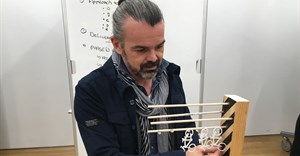
Subscribe & Follow
Jobs
- Mid to Senior Weight Graphic Designer Durban
- Digital Marketing Designer Midrand
- Senior Creative Designer Cape Town
- Designer - Outdoor Apparel Cape Town
- Style Intern Cape Town
- Multimedia Designer - Cape Town Cape Town
- Pre-Production Manager – Leisure Design Centre Cape Town
- Mid / Senior Graphic and Web Designer Johannesburg
- Graphic Designer Pretoria
- Midweight Graphic and Web Designer Pretoria
Strategic design can help your brand overcome stagnation

Everything looks and works like it should, but there is the feeling that the business isn’t quite ramping up to the next level the way it could.
Diagnosing underlying issues
While most businesses use profits, sales volume, or market share as success indicators, these don’t help to pinpoint what is holding the business back. However, by applying strategic design thinking and problem-solving principles to your organisation, you can get a clearer look under the hood of your business and more accurately diagnose underlying issues.
Strategic design also gives you the tools necessary to remodel obstacles as opportunities and a framework for building a culture of collaboration and innovation within your organisation. In essence, if you’re feeling a little lost, strategic design can help your business find a renewed sense of direction to navigate its way to success.
As business leaders, you might have it all - the right motivation levels, an eager workforce and a great product or service, but your growth has stagnated. Or, you might have noticed that your people are stuck in a rut. Perplexing, right? If this sounds familiar to you, it might be time to consider how best to reignite that growth, relight that spark and transform your business to get it back on track. That would be through strategic design. Problems aren’t solved through the same thinking that created them, so it’s best to pull in an objective outsider who can take your business through the necessary journey of discovery and transformation by applying its principles and practices.
Uncovering problems
Often when businesses start investigating their workings through the lens of strategic design, they discover problems they didn’t even know they had. An experienced intermediary partner will take the problem at hand and use design thinking to frame the solution while considering all possible variations against the environment and all involved stakeholders. This ensures that whatever outcome is chosen, it is a solution that is designed for everyone who needs to use that service, product or process.
What symptoms indicate that a company might need a thorough a strategic design-led diagnostic check-up? Discomfort. Friction. An inability to solve a problem internally or the need to seek a far more effective solution than they’ve already identified. Whether it’s a sales, staff, process or platform problem, this thinking is a process that makes it possible to uncover the optimal solution for that problem. An intermediary does this by asking the necessary questions that no one else thinks to ask or wants to ask.
“Why is it this way?” and “what would you like to do?” are particularly effective when it comes to identifying root causes and disregarding hierarchy in your organisation that hinders effective problem-solving. Through such a process, the intermediary can see straight through your business and identify the cause of the issue and the path that will lead to designing a new process, product, or service.
How does strategic design thinking help? It provides a framework for reasoning that allows us to explore whether the way we propose to solve a problem is desirable. It allows us to examine whether the solution is feasible, which includes exploring available technology, manpower and affordability, as well as possible return on investment to determine viability. Through this process, we solve problems, and every problem that is solved is worth something. It’s easy to establish the cost of something when the value of solving a problem is far more important. However, the cost of not solving the problem is just as important.
The biggest challenge in solving a problem is the first step - defining the problem with clarity. Once the problem is defined, we can identify blind spots and highlight unknown variables. We do this through a workshopping process that starts with discovery - we create a safe space for solution seekers to think big and dream about what could be. We discuss the desirability, feasibility, and viability of what we want to achieve and what this will mean to your business and its objectives. Then we collectively make the important decisions, weighing up impact versus effort. From this workshopping process, your business gains a clear definition of the problem at hand, as well as agreement on the roles and responsibilities of all involved in working toward achieving the solution.
Buy-in from everyone involved is secured through stakeholder mapping, which ensures agreement on the desirability of the solution for everyone who needs to use it. The user journey is visualised, the scope of the project is defined, and blind spots are established for further investigation. A critical time path and measurable objectives are plotted, to steer efforts as we work toward making the solution a reality.
In this way, the solution we enable becomes a formal response to a strategic question, and business leaders like you, are empowered with everything you need to transform your business. Together, we discover, design and develop new technology and processes to give your business the ability to continuously improve ways of working to facilitate collaboration and innovation and optimise for growth into the future.

















